
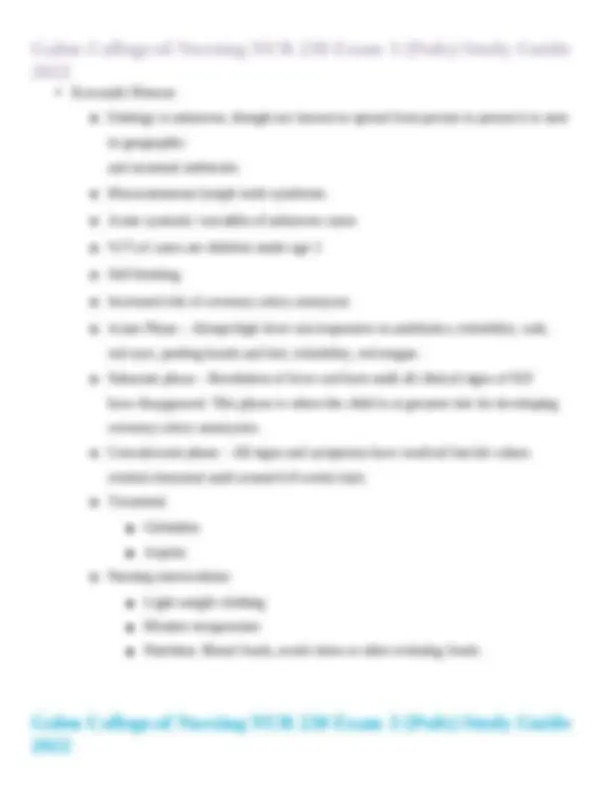

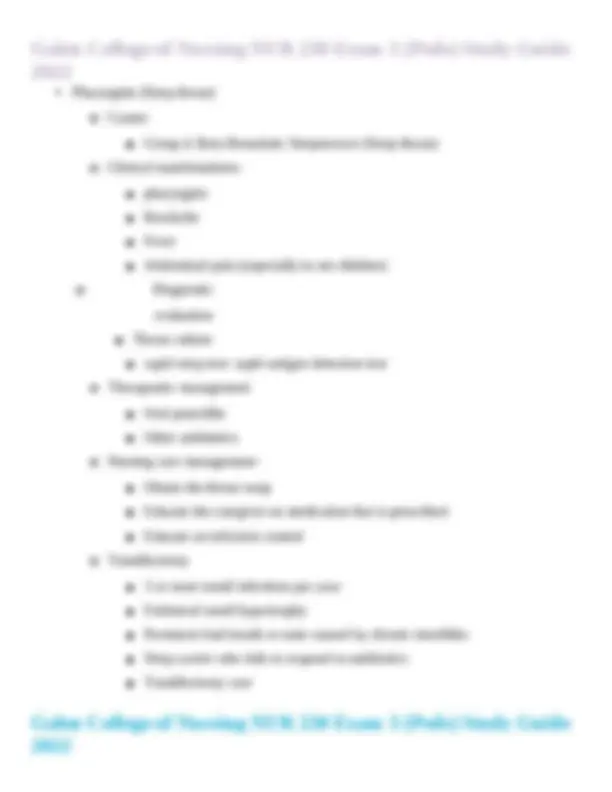
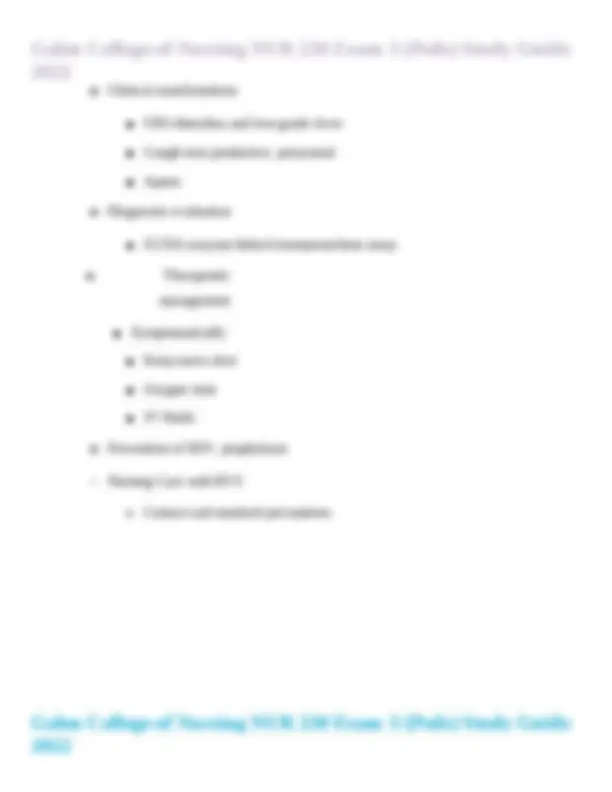
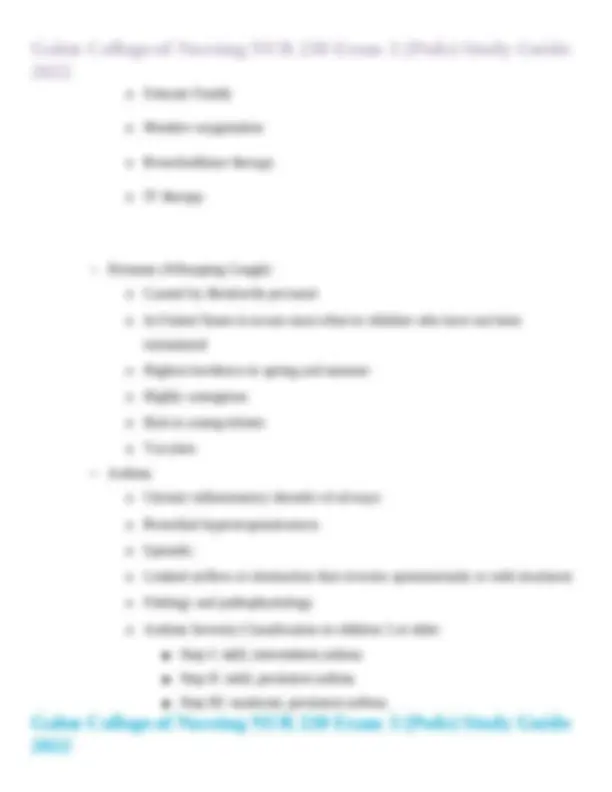
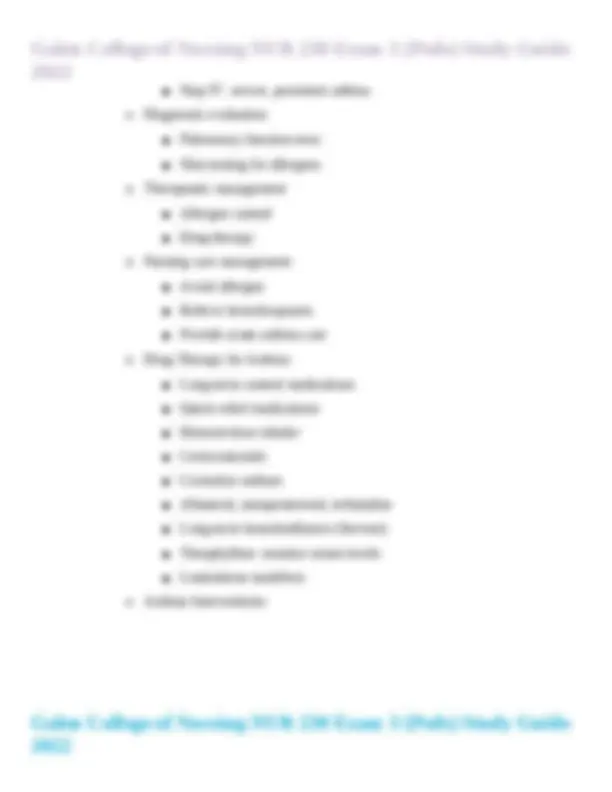
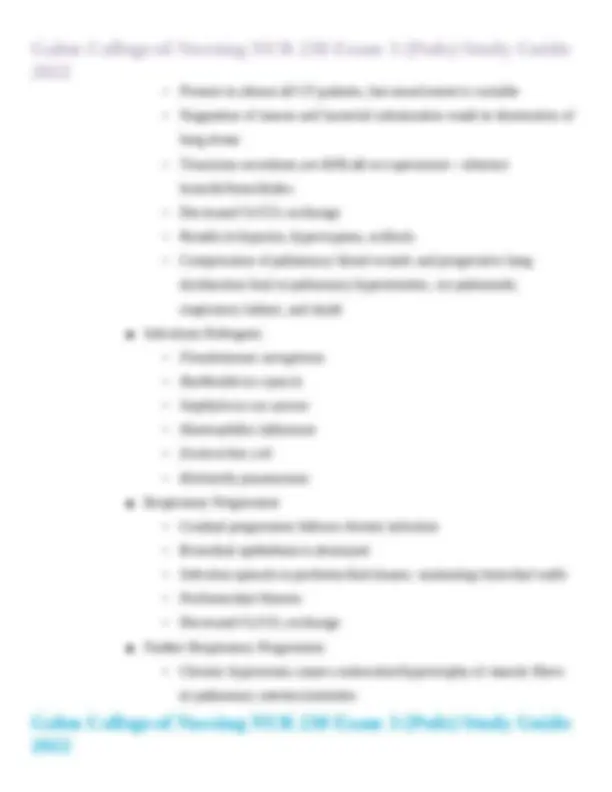
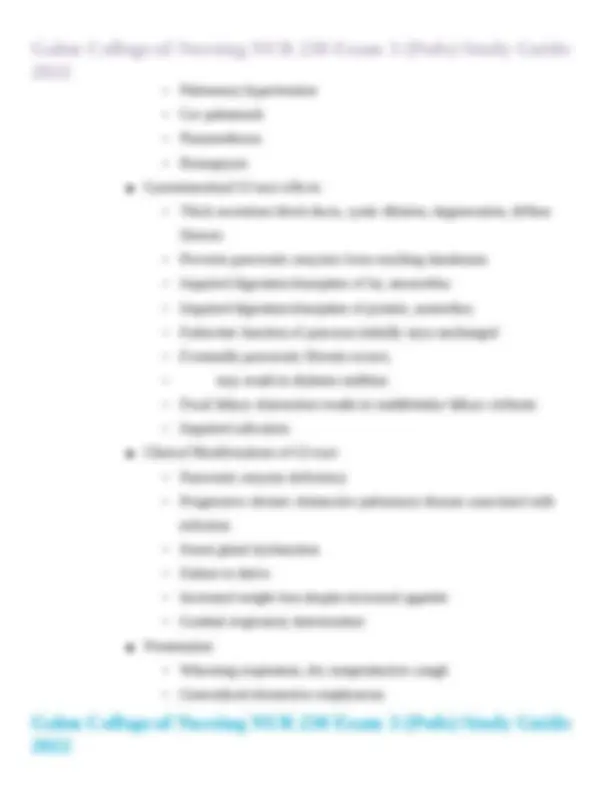

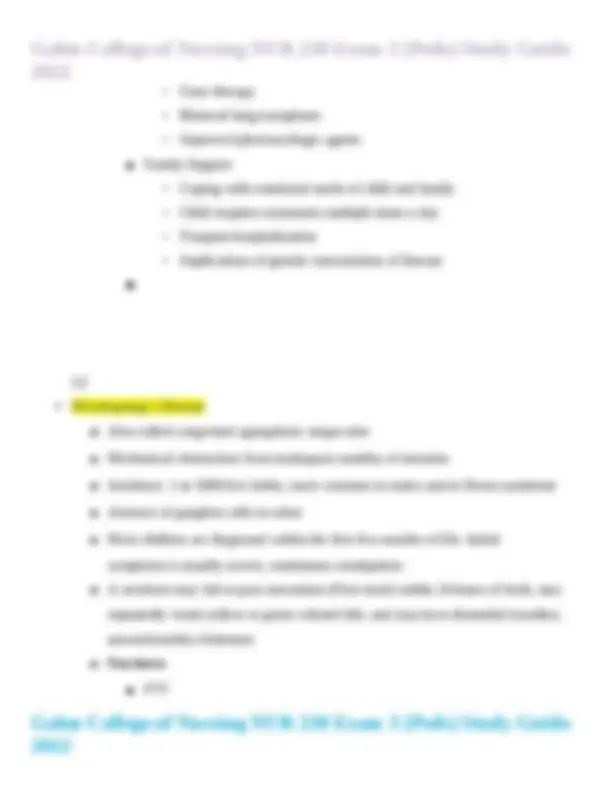
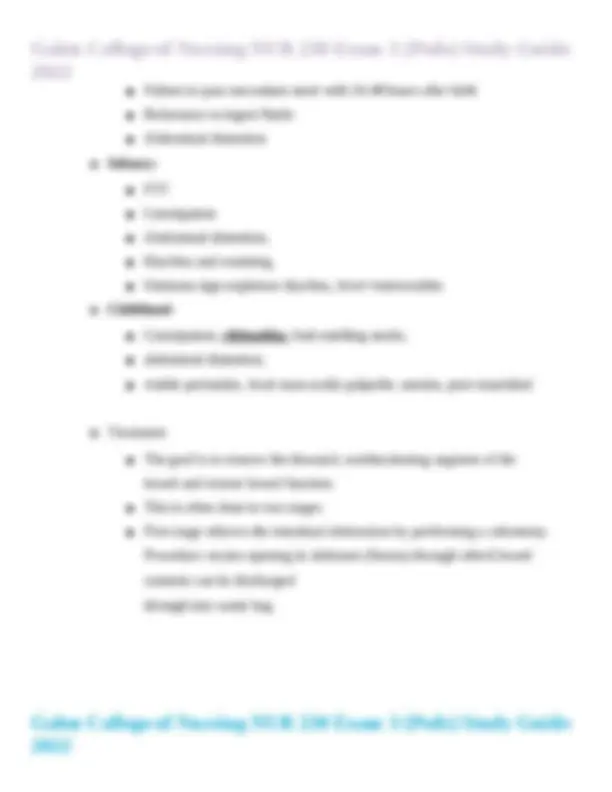
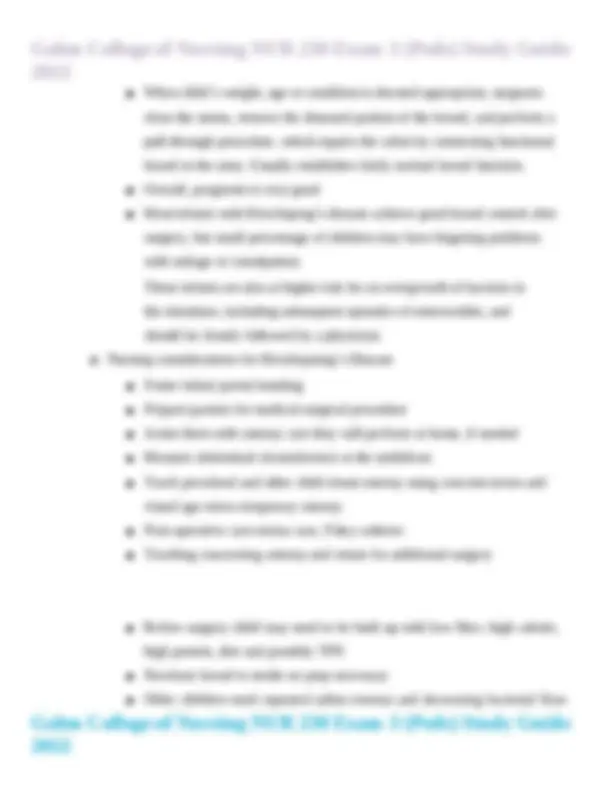
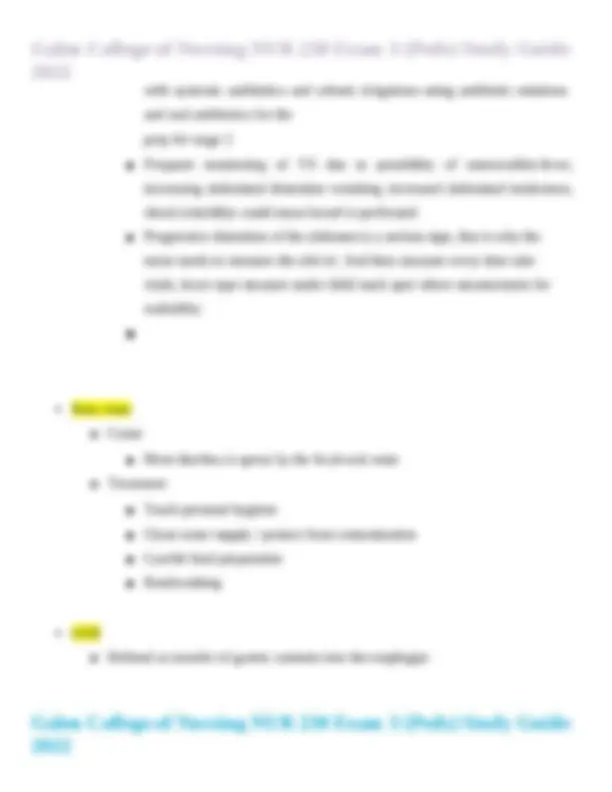
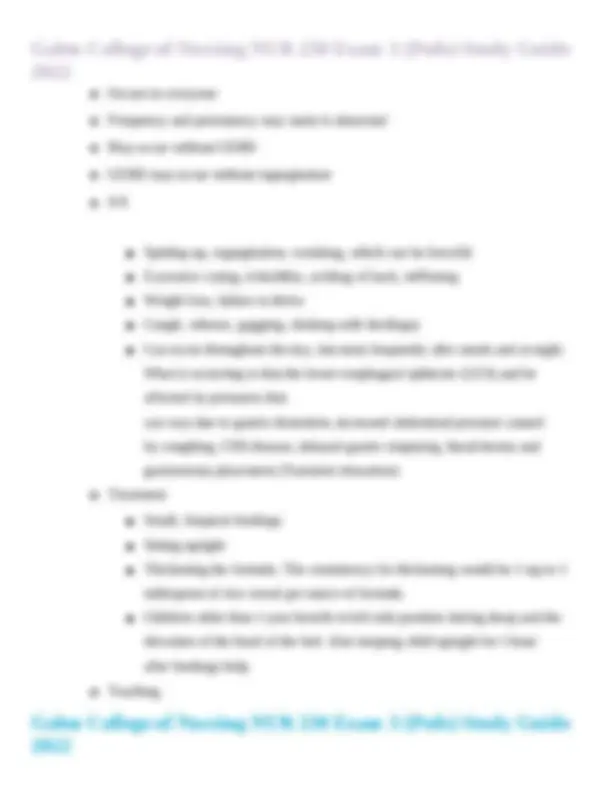
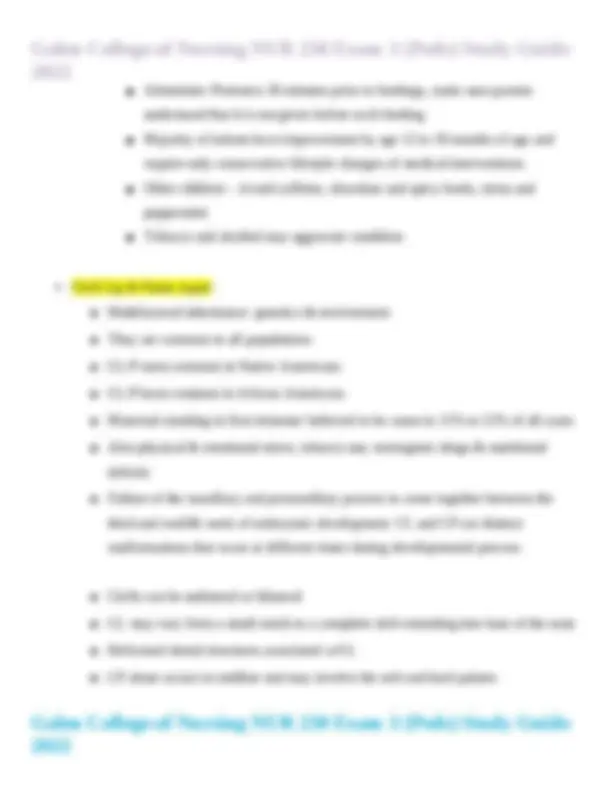

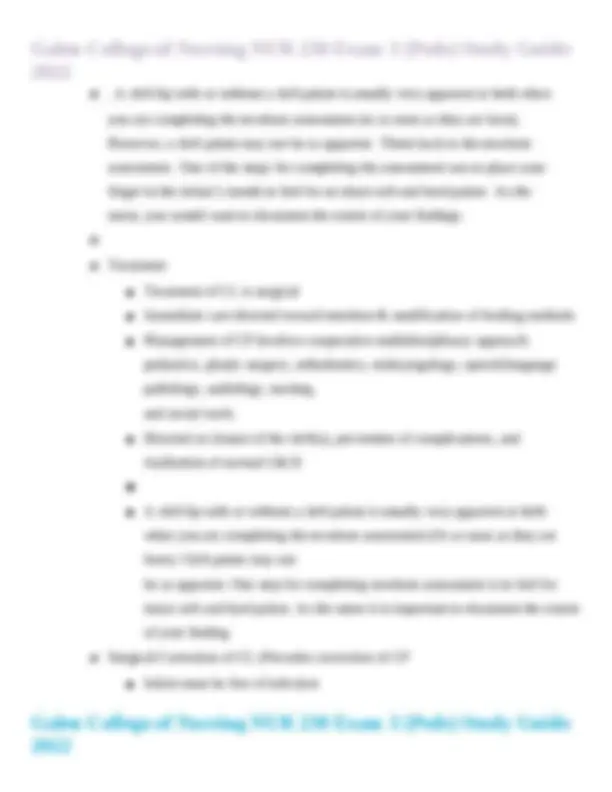
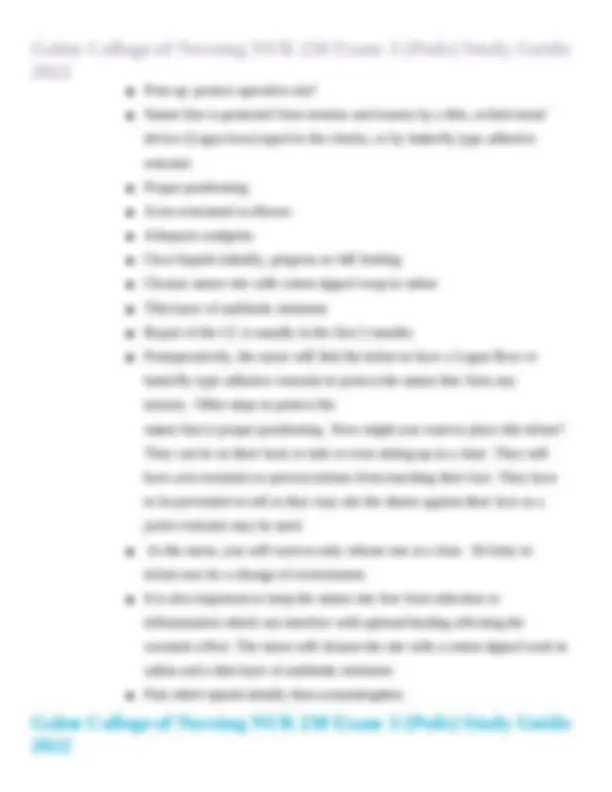
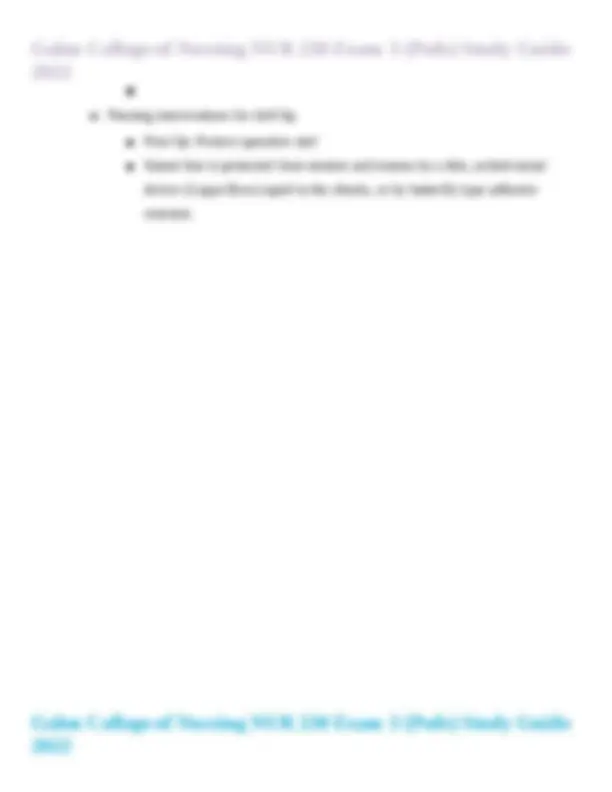
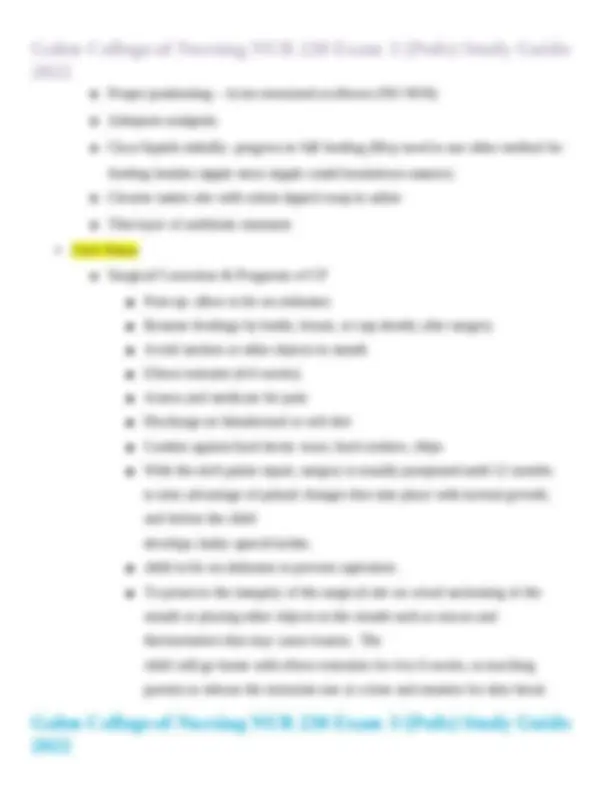
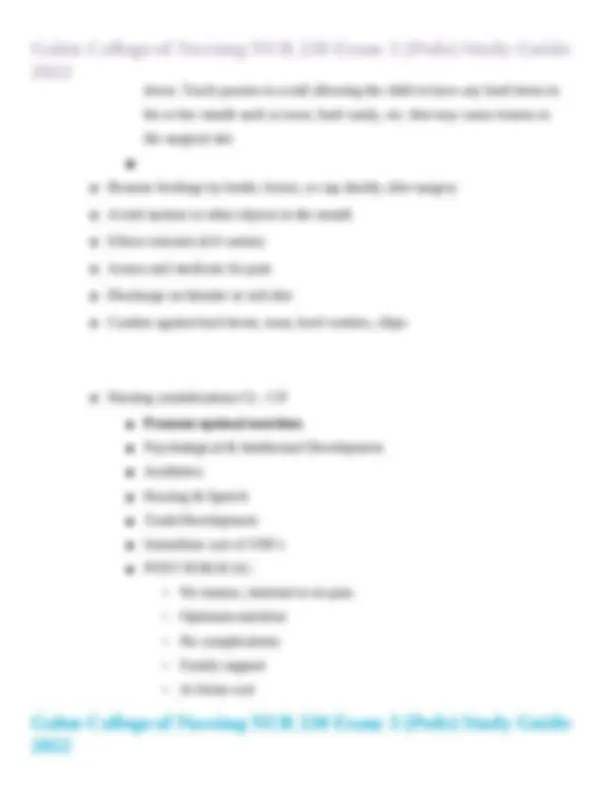
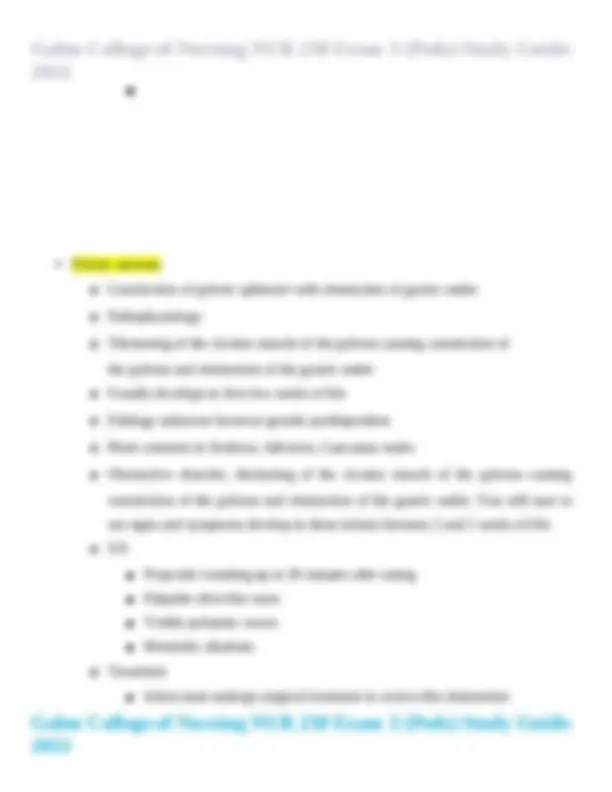
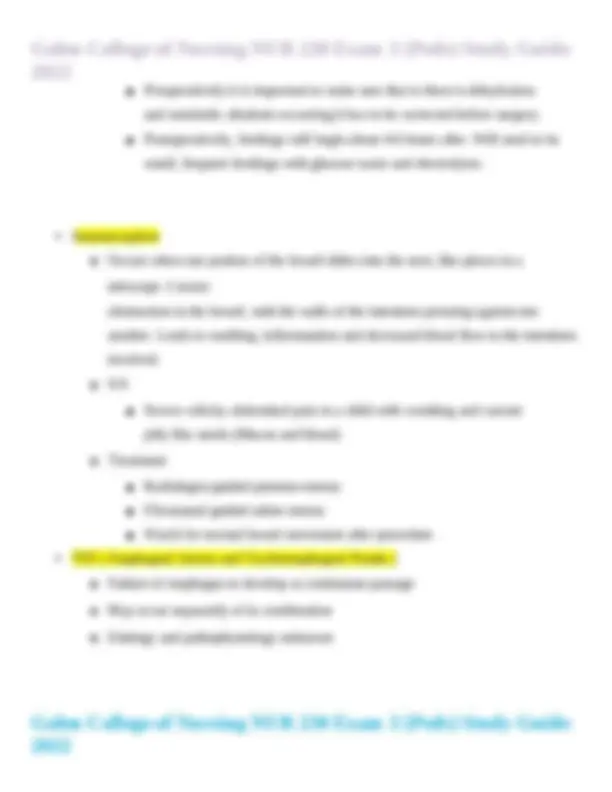
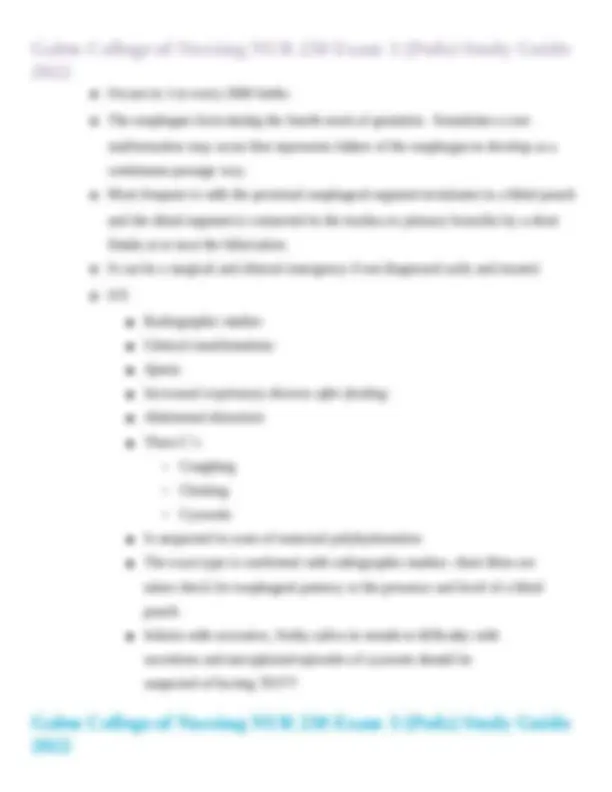
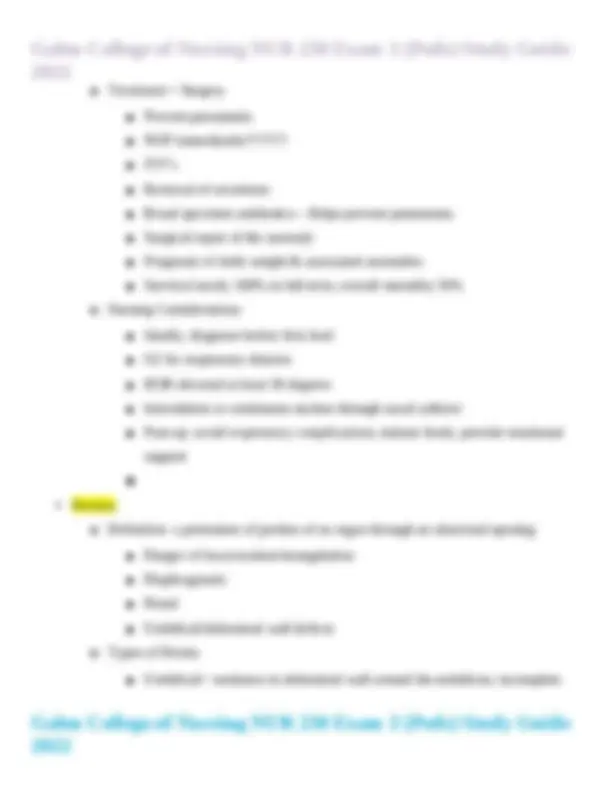


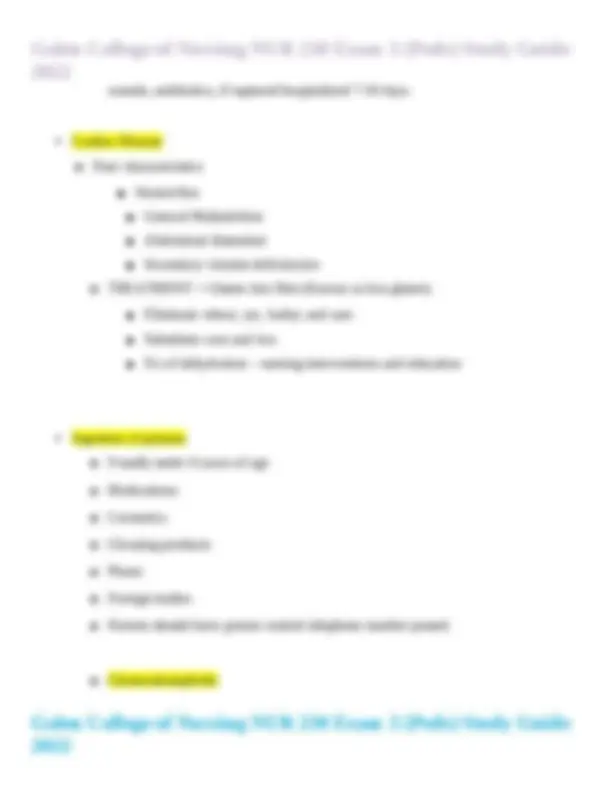
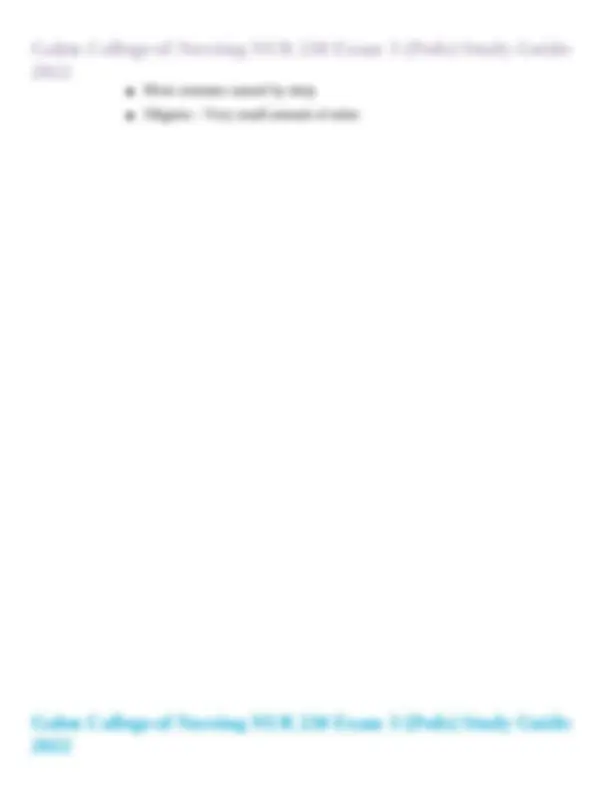
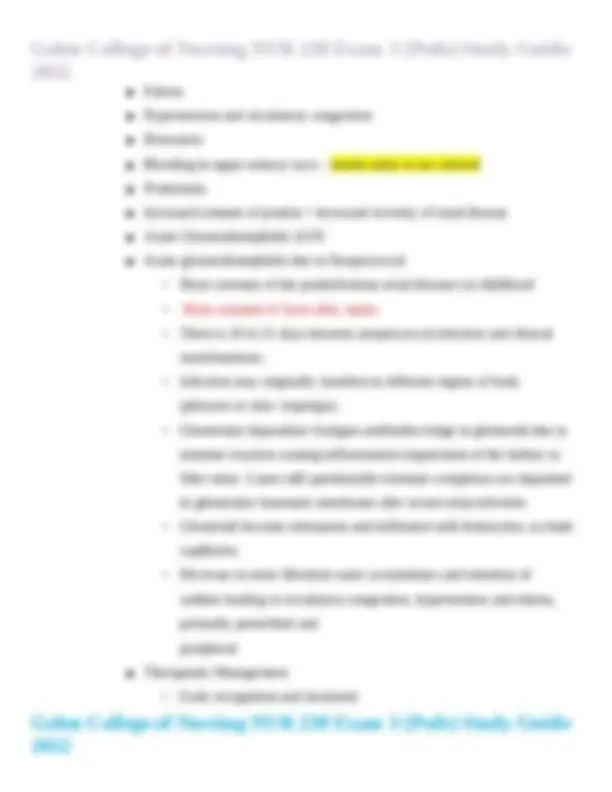
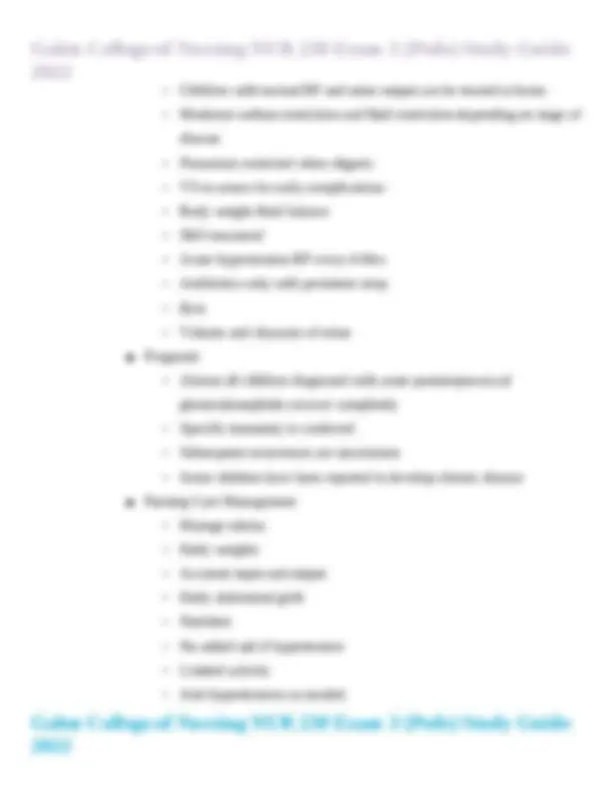
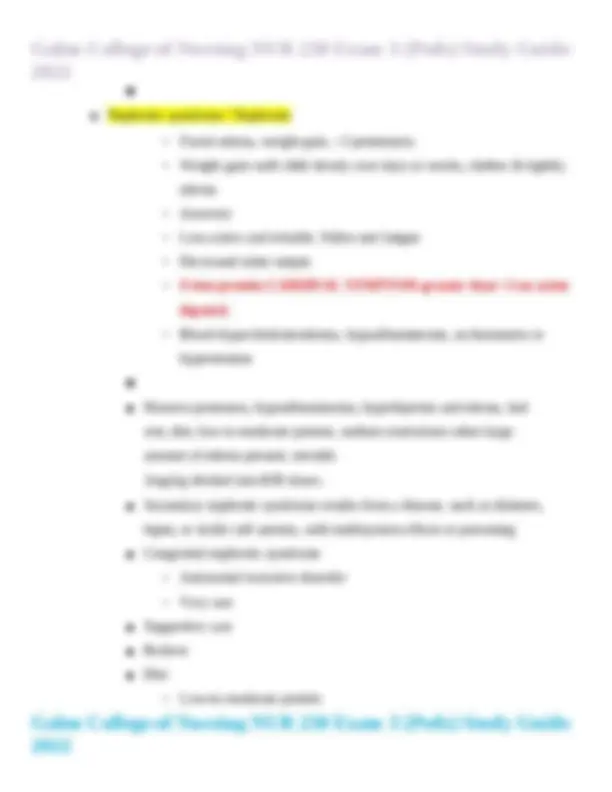
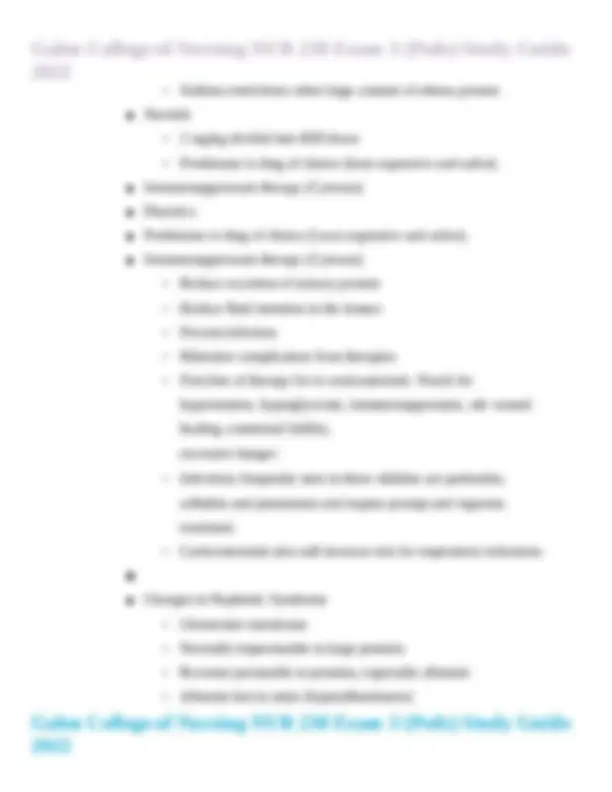
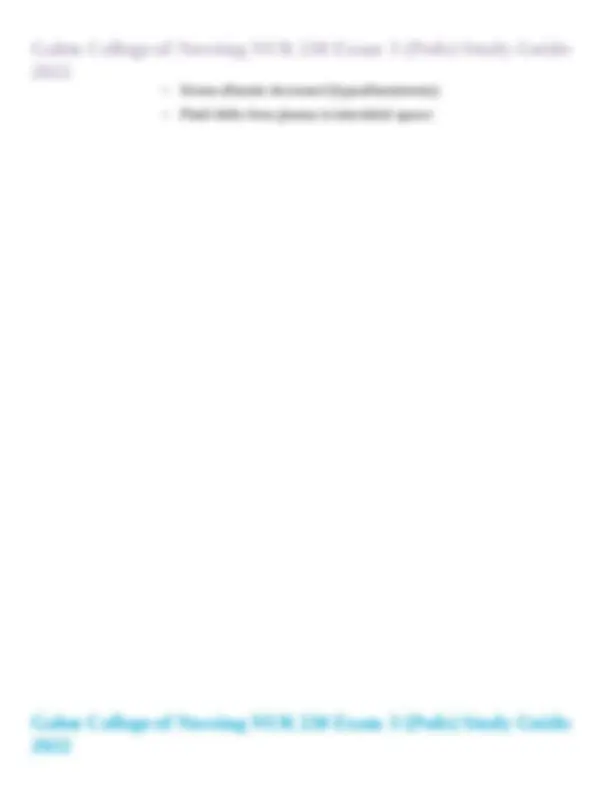
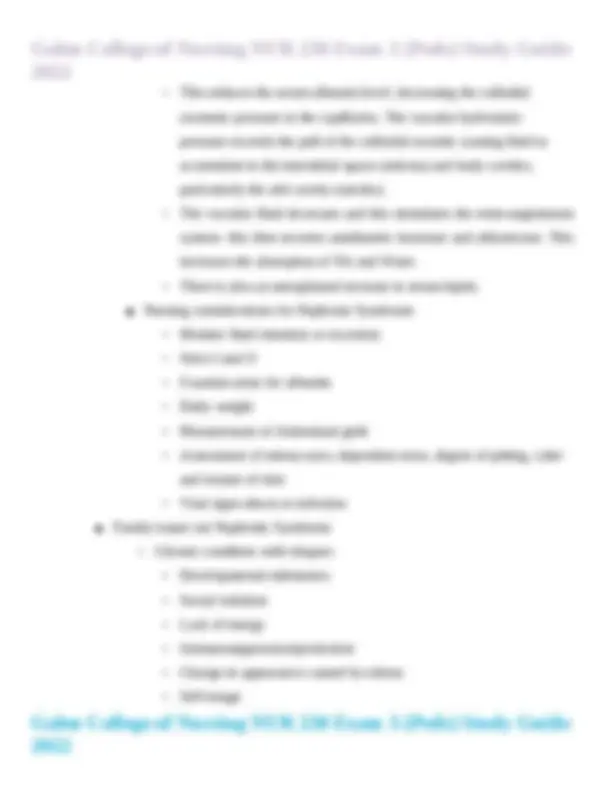
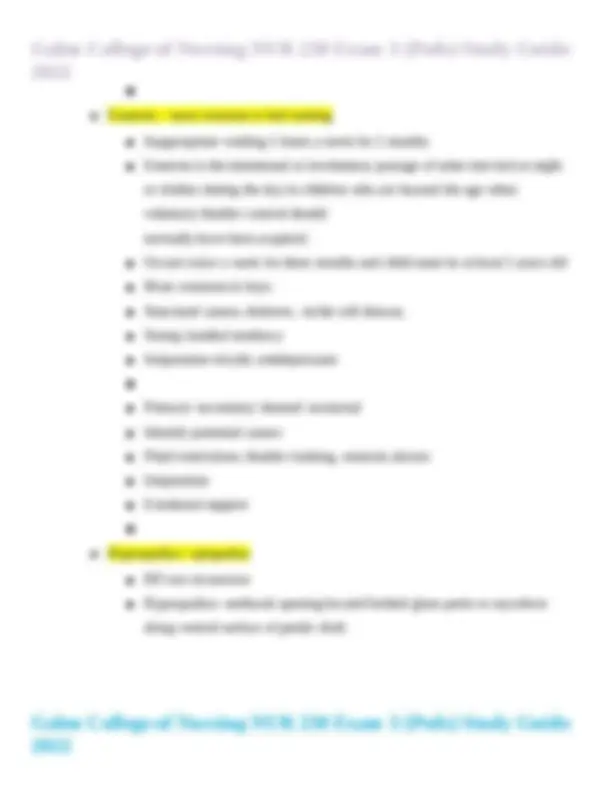
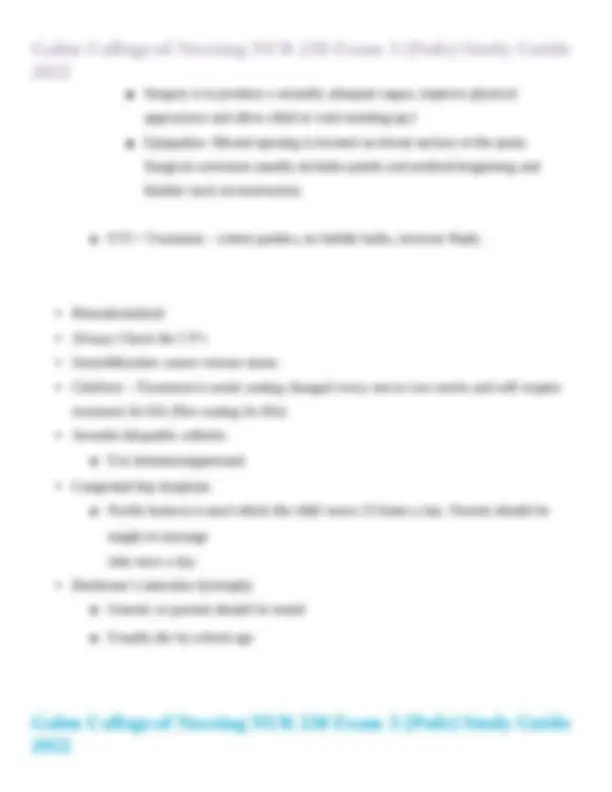
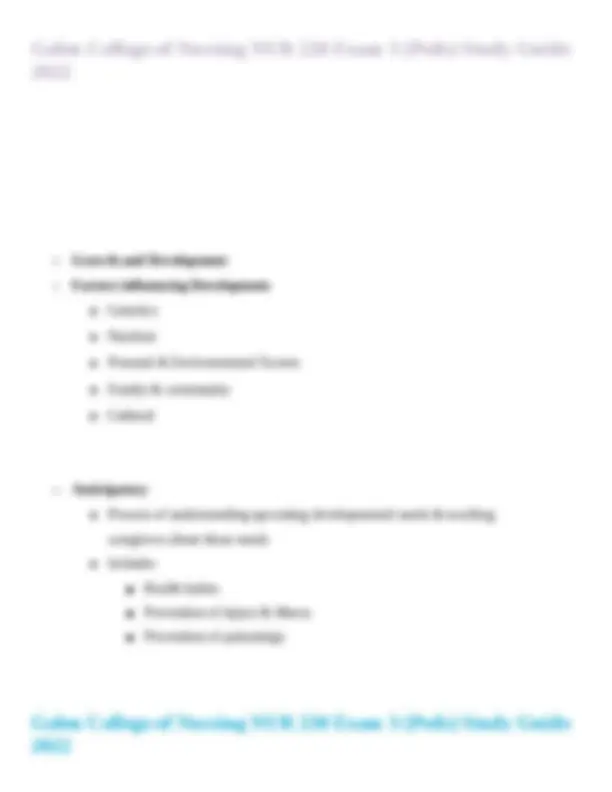
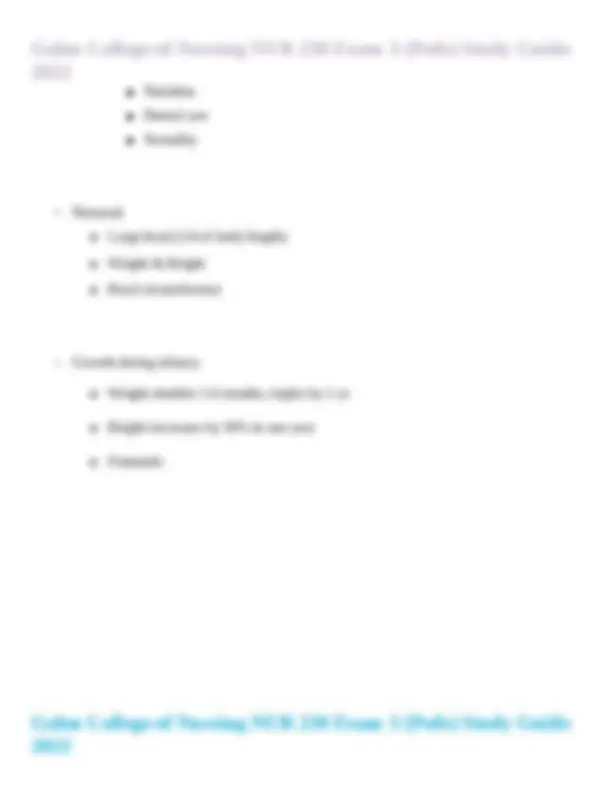
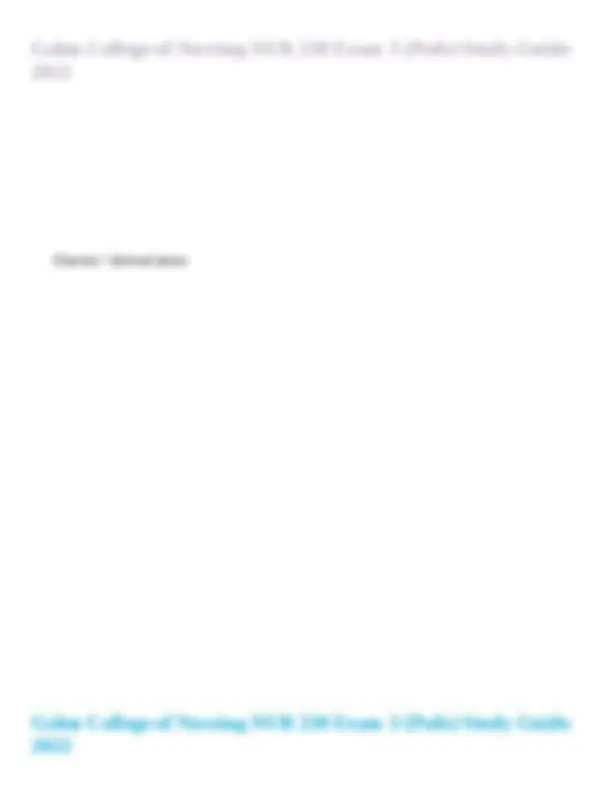
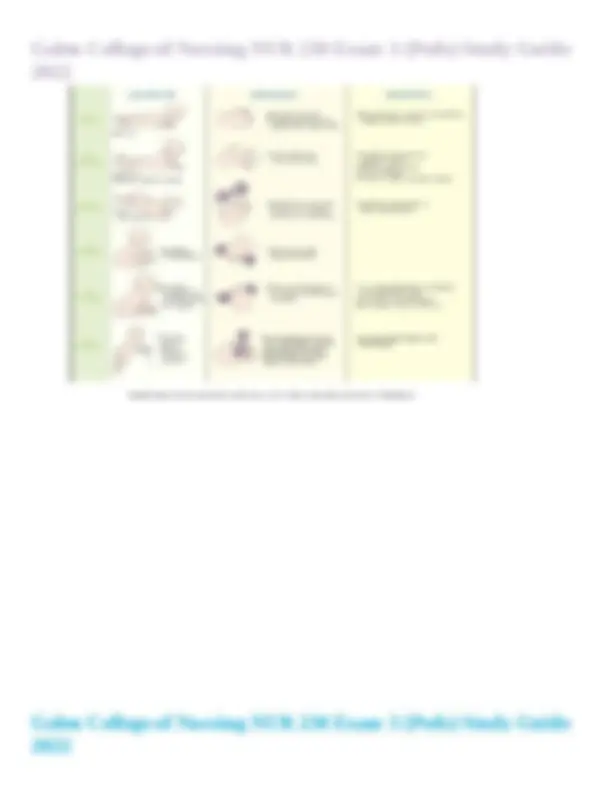
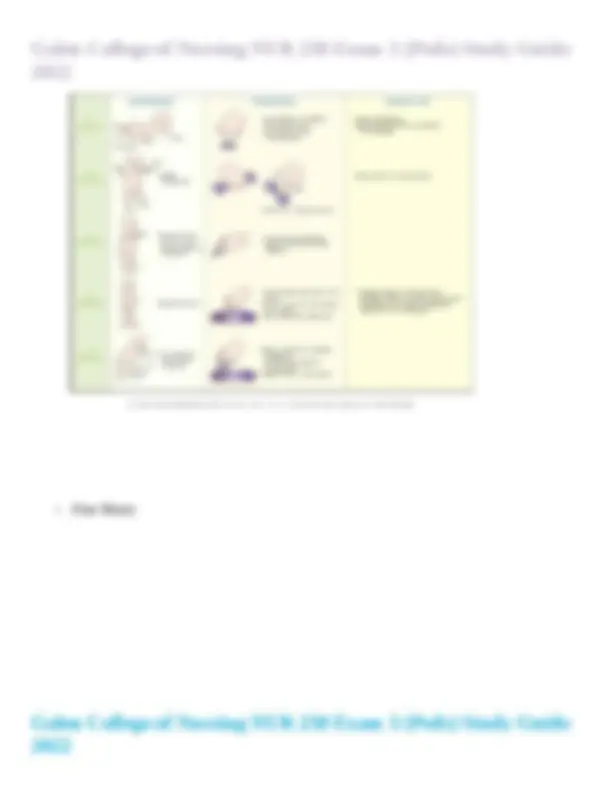
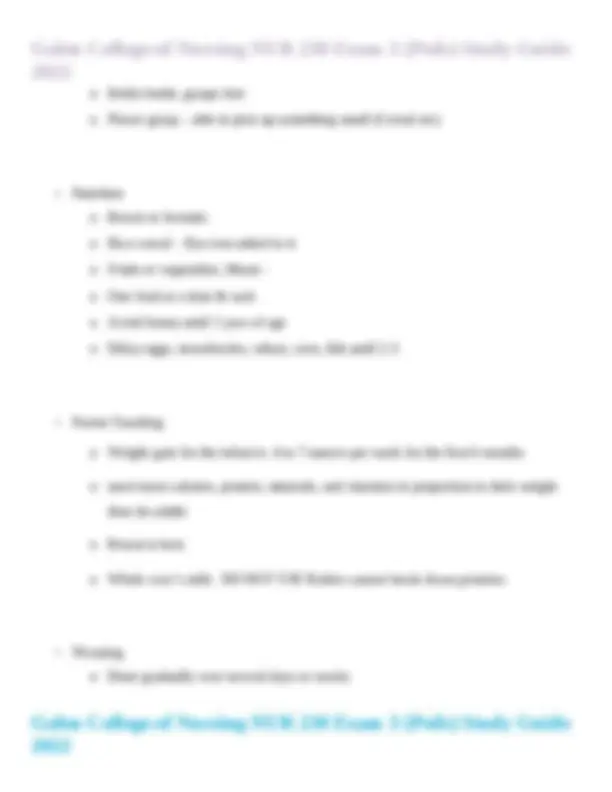
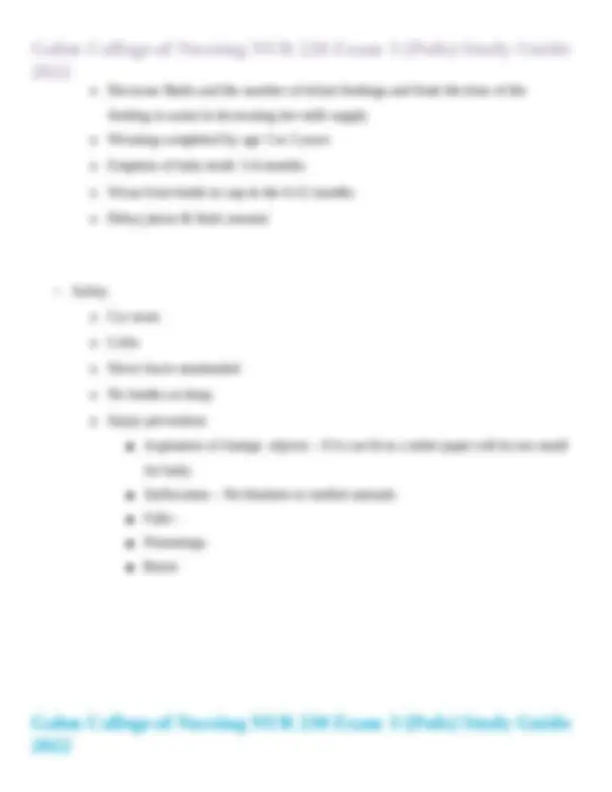
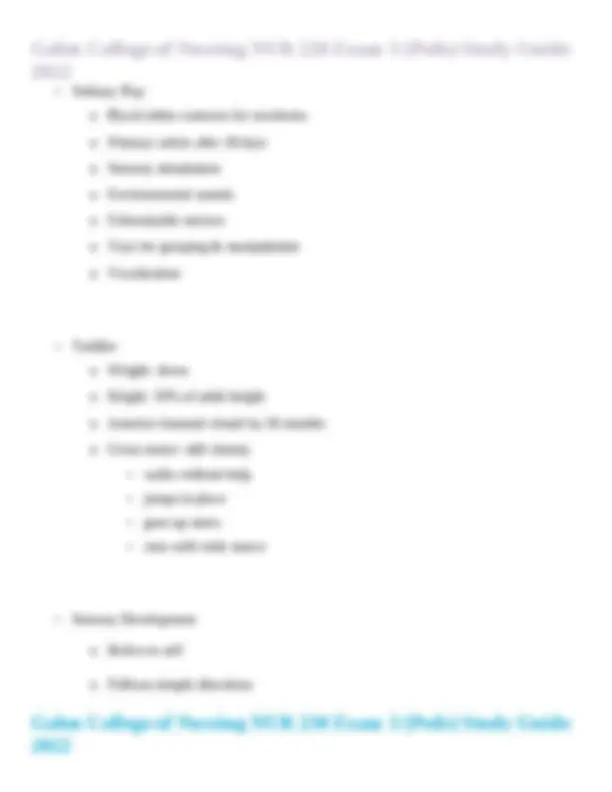
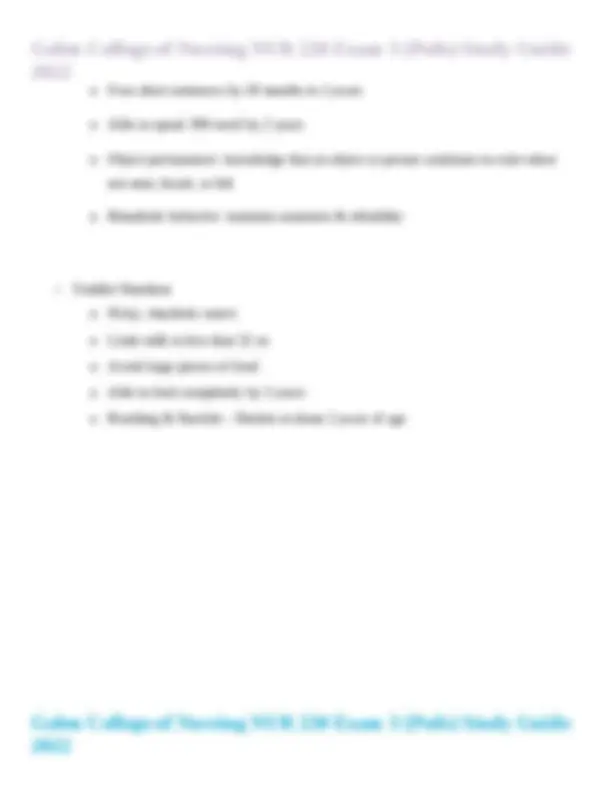
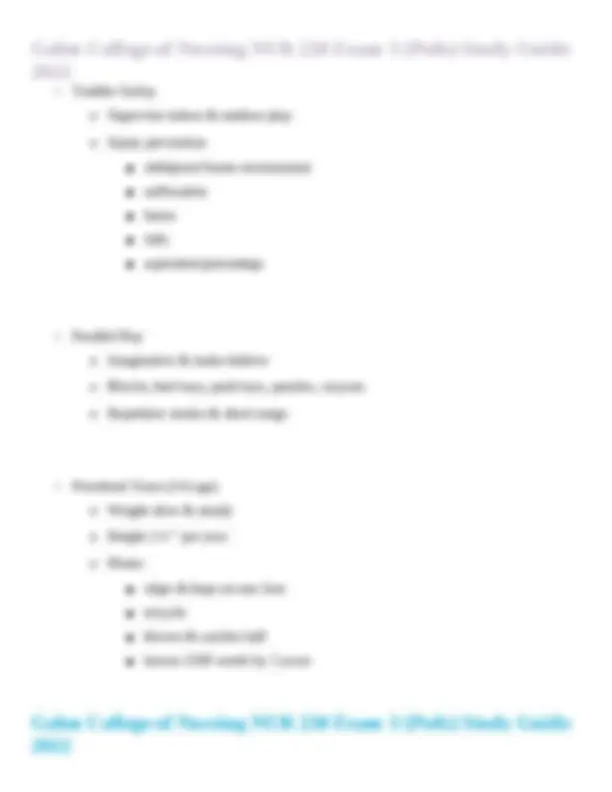
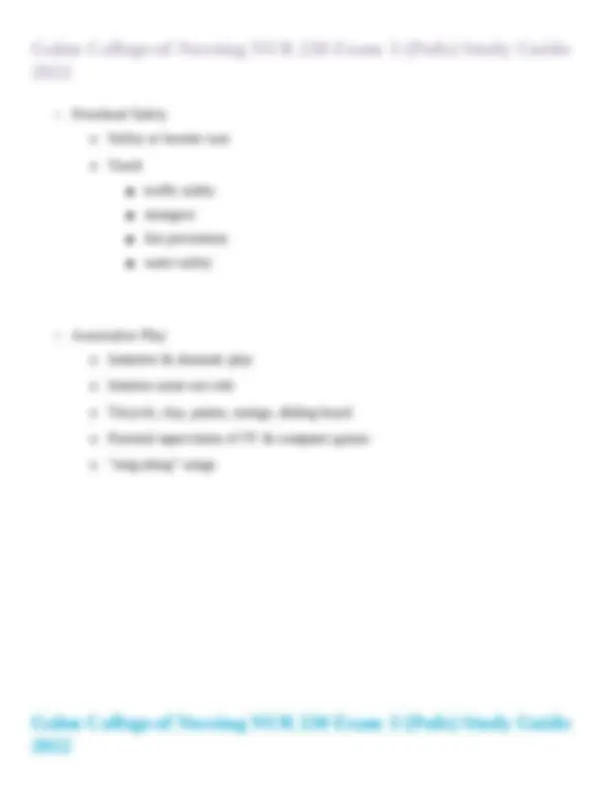
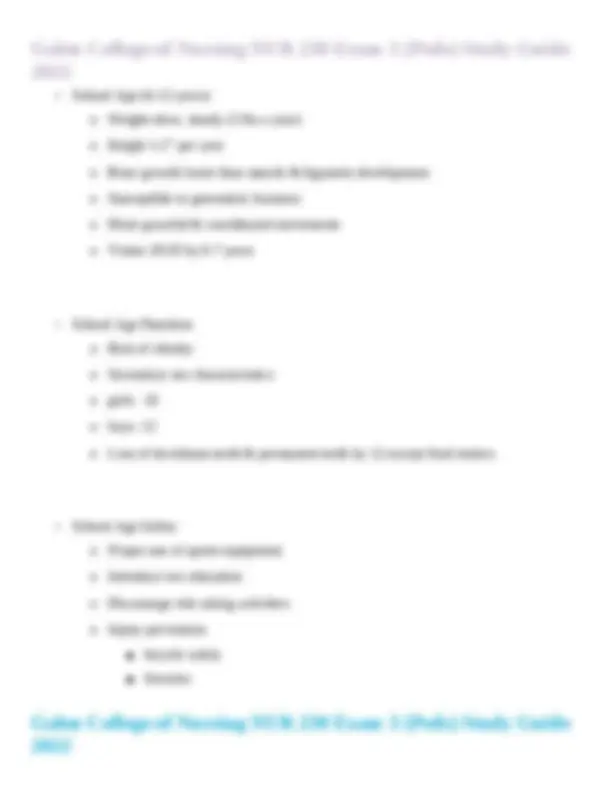
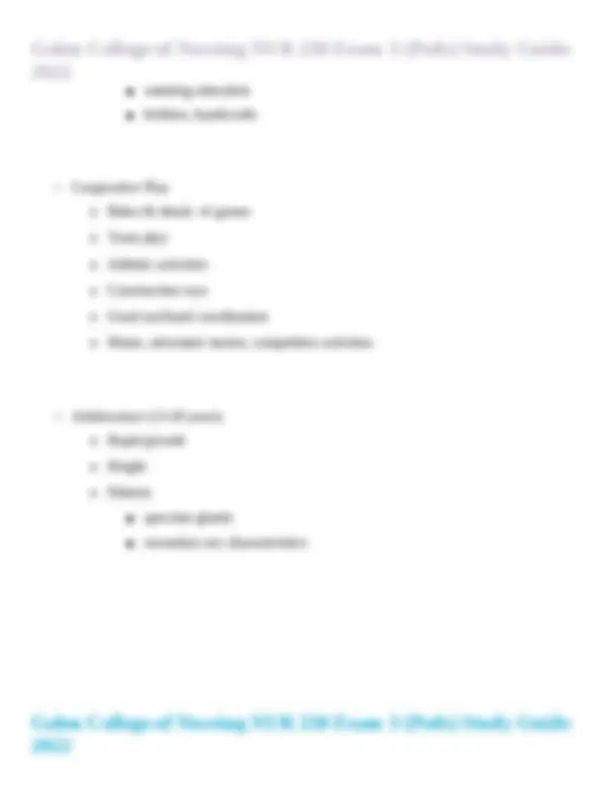
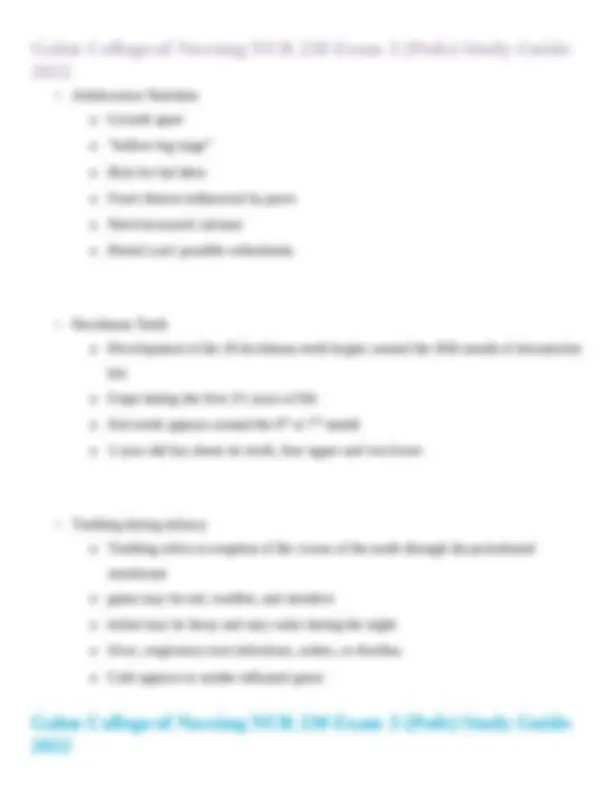
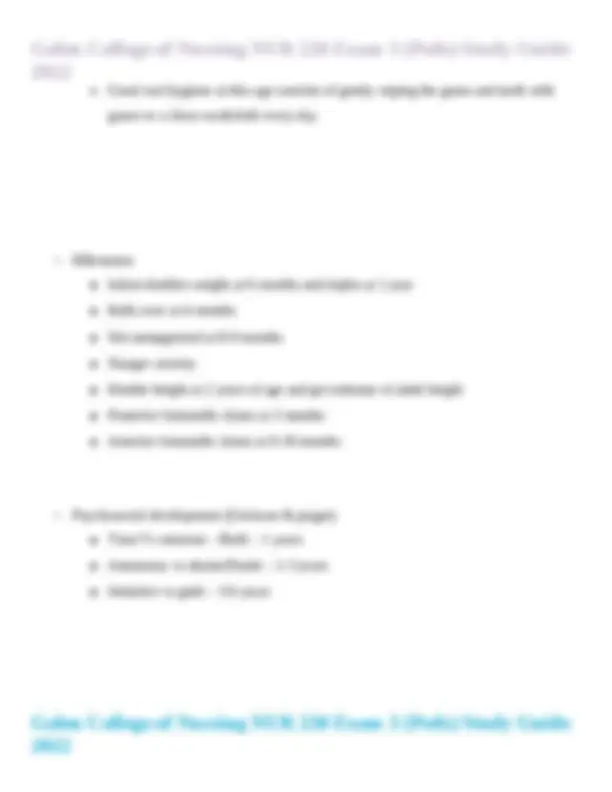
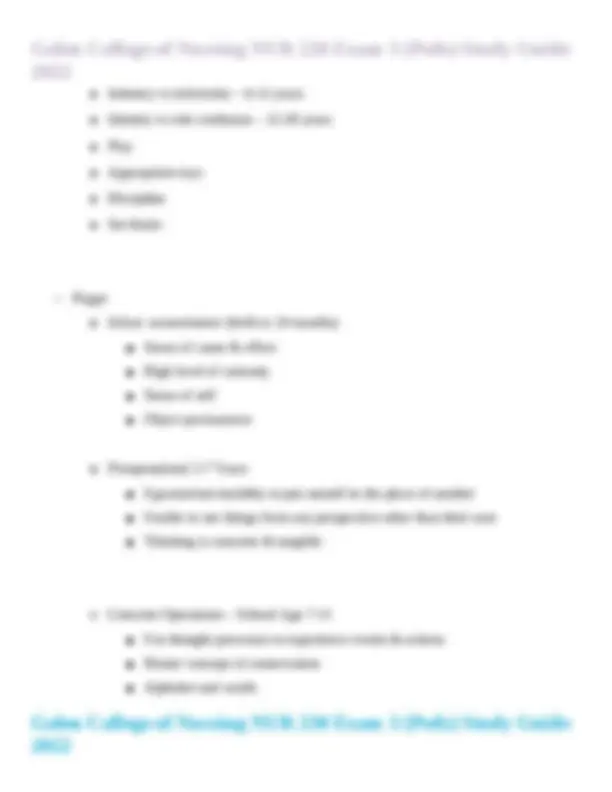
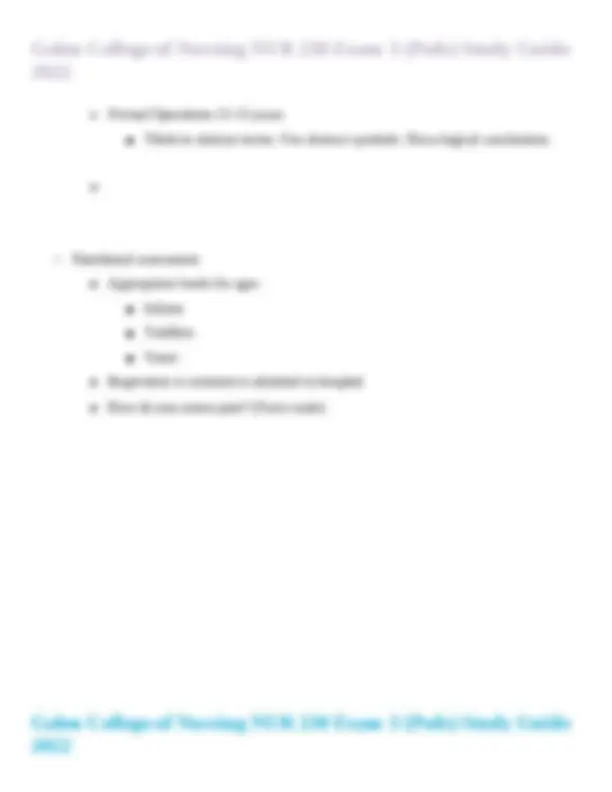
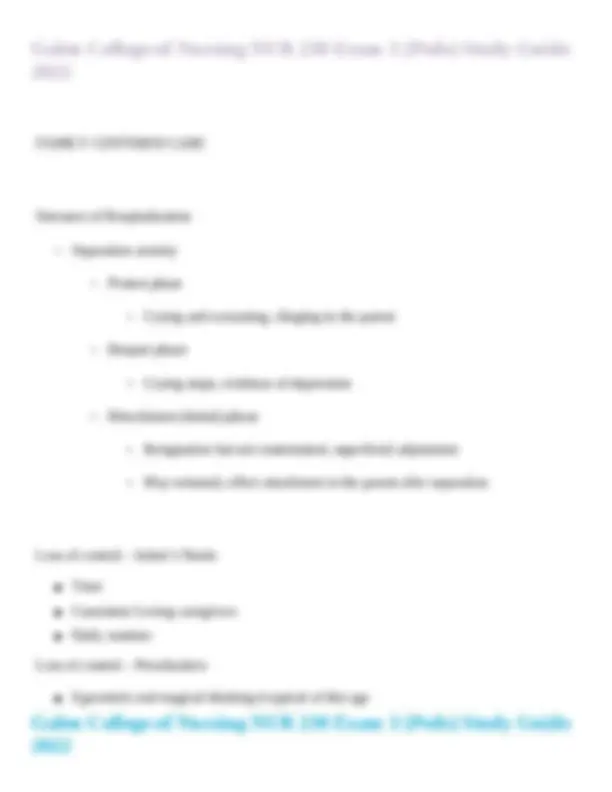
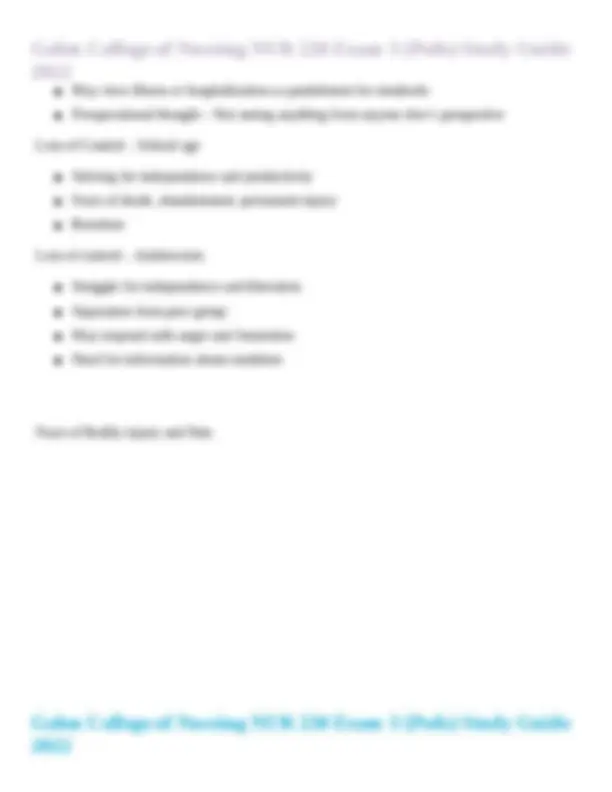
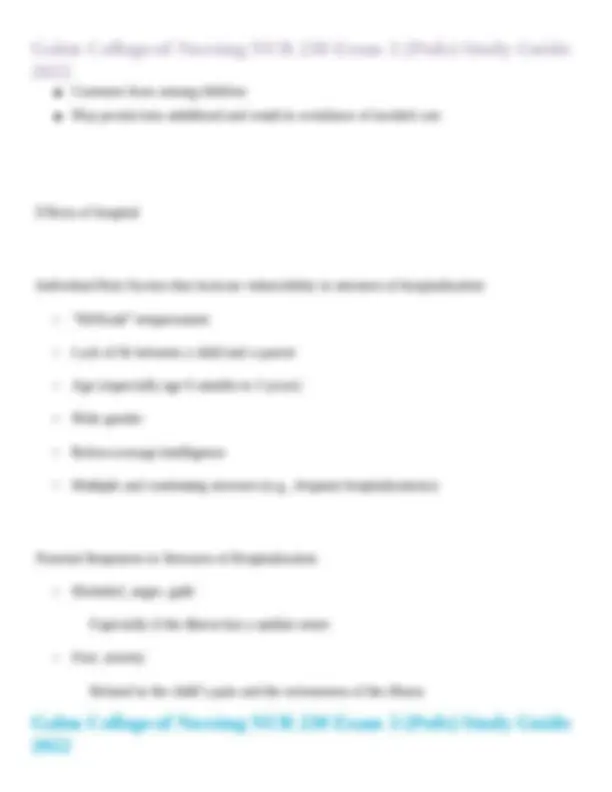
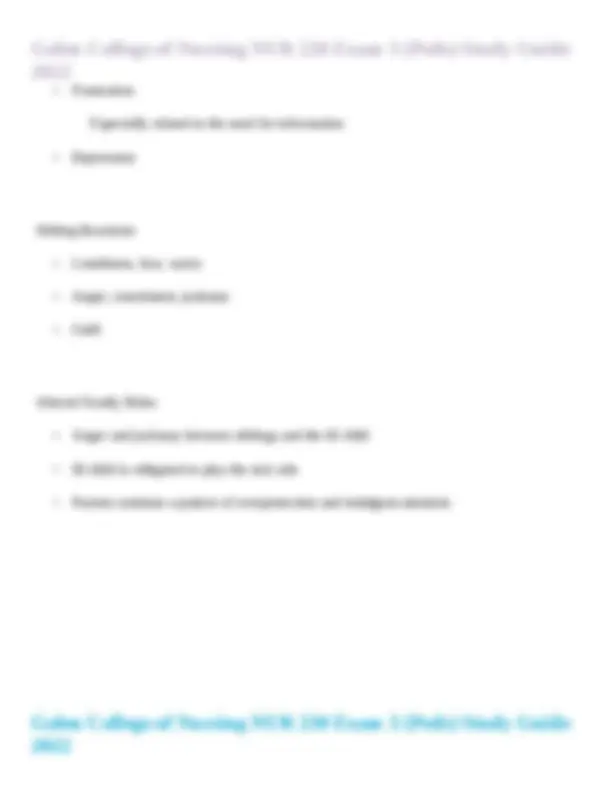
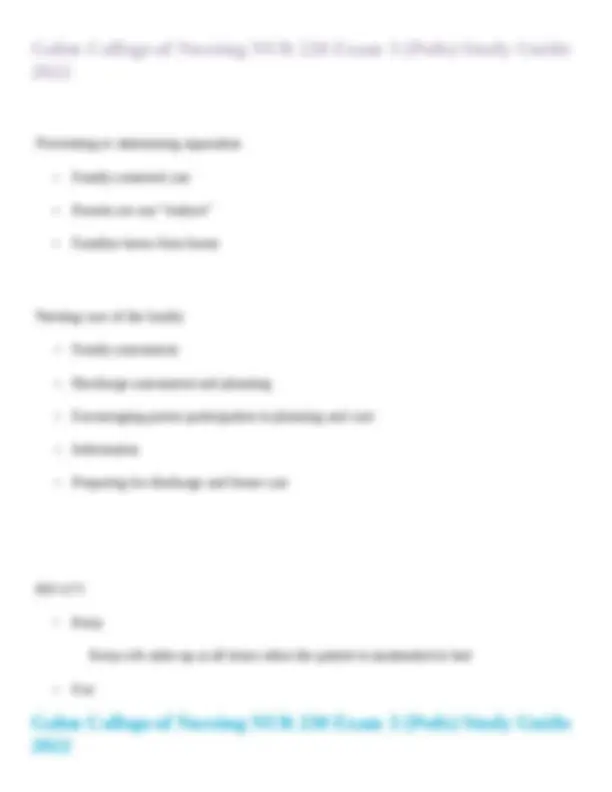
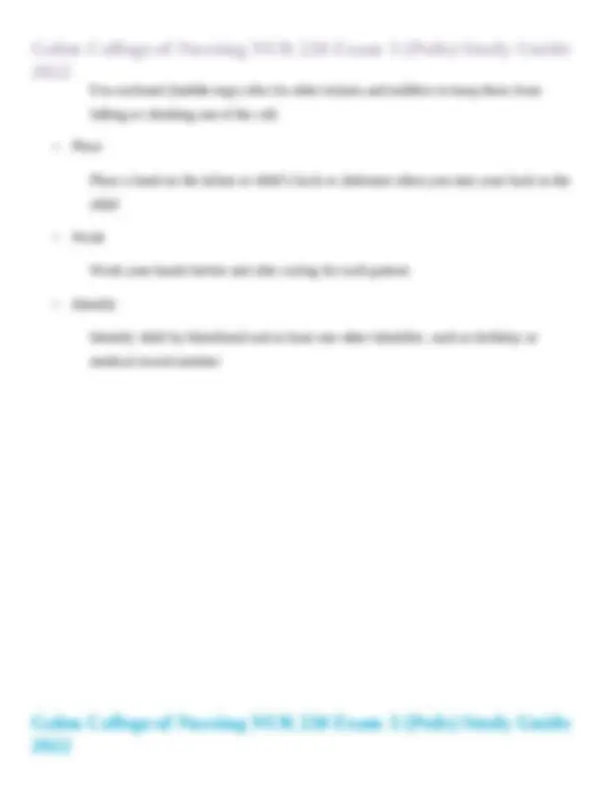
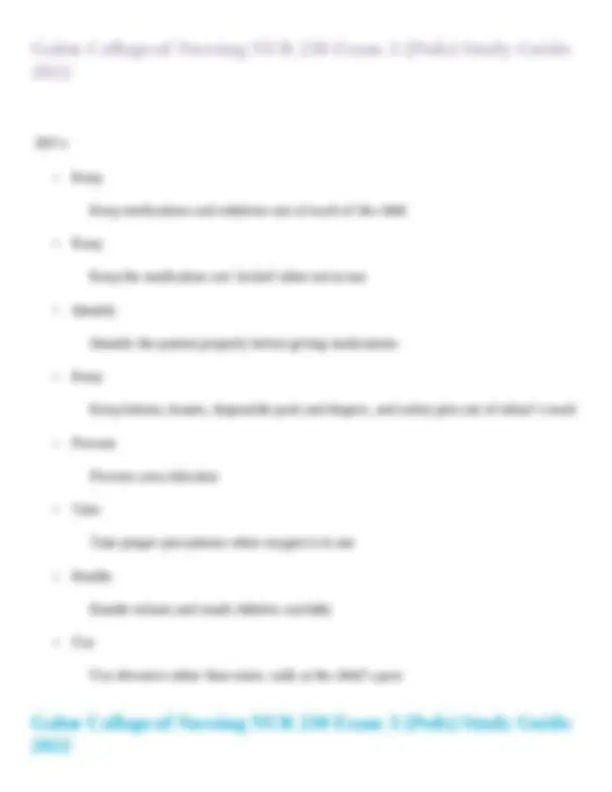
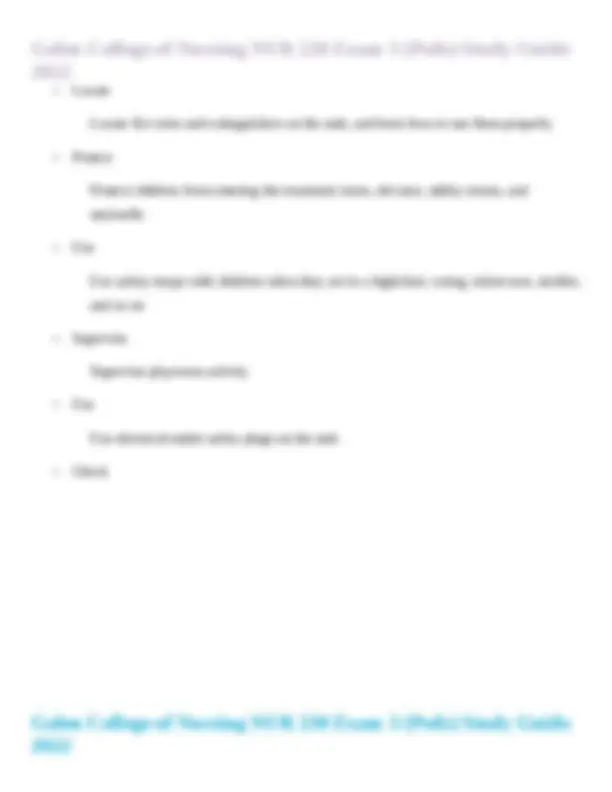
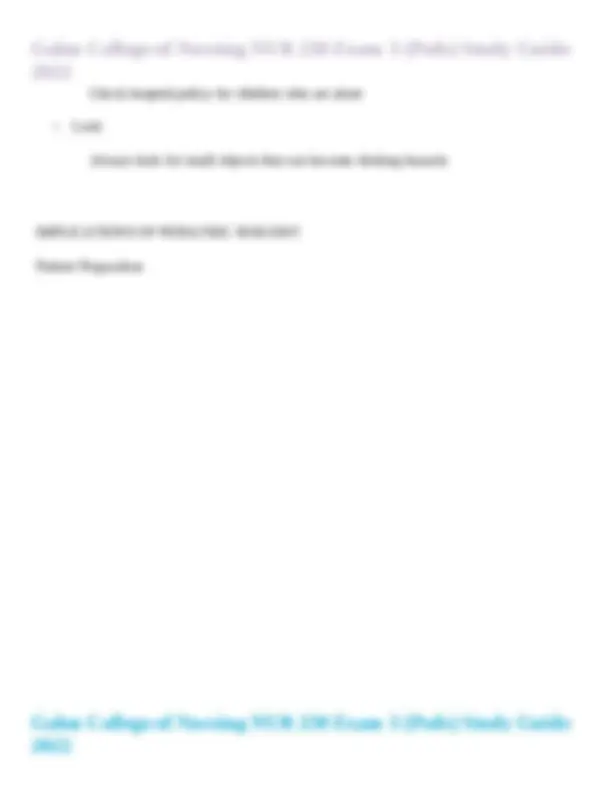


Study with the several resources on Docsity

Earn points by helping other students or get them with a premium plan


Prepare for your exams
Study with the several resources on Docsity

Earn points to download
Earn points by helping other students or get them with a premium plan
Community
Ask the community for help and clear up your study doubts
Discover the best universities in your country according to Docsity users
Free resources
Download our free guides on studying techniques, anxiety management strategies, and thesis advice from Docsity tutors
Galen College of Nursing NUR 230 Exam 3 (Peds) Study Guide 2022
Typology: Exams
1 / 71

This page cannot be seen from the preview
Don't miss anything!
































































Cardiac
extremities) and decreased pressure distal to the obstruction (Body and extremities). Patient presents with increased blood pressure and bounding pulses in the arms, weak or absent femoral pulses and a cool lower extremities with lower blood pressure. o A cyanotic = oxygenated blood is not getting out to the systemic circulation, may go into the lungs. o Tetralogy of Fallot: Four defects are ventricular septal defect, pulmonic stenosis, overriding aortal and right ventricular hypertrophy. Manifestations are cyanotic at birth. It can start of mid and progress with time. There is a systolic murmur, moderate in intensity. There can be acute episodes of cyanosis and hypoxia call blue spells or you may see elevated HR and RR. When these spells occur you will place the infant in the knee chest position. You will see older children will automatically go into this position. Treatment is usually done within the first year of life. Mortality is less then 3 percent. Congestive heart failure is a concern posturer.
o o Nursing care management ▪ Relieve the pain (AOM) ▪ Facilitate drainage ▪ Educate the family ▪ Provide emotional support o Prevention of recurrence ▪ Take all antibiotics ▪ Hold child upright when feeding ▪ Do not prop bottle o
o Clinical manifestations ▪ URI-rhinorhea and low-grade fever ▪ Cough-non productive, prosysmal ▪ Apnea o Diagnostic evaluation ▪ ELISA-enzyme-linked immunosorbent assay o Therapeutic management ▪ Symptomatically ▪ Keep nares clear ▪ Oxygen mist ▪ IV fluids o Prevention of RSV, prophylaxis
▪ Step IV: severe, persistent asthma o Diagnostic evaluation ▪ Pulmonary function tests ▪ Skin testing for allergens o Therapeutic management ▪ Allergen control ▪ Drug therapy o Nursing care management ▪ Avoid allergen ▪ Relieve bronchospasms ▪ Provide acute asthma care o Drug Therapy for Asthma ▪ Long-term control medications ▪ Quick-relief medications ▪ Metered-dose inhaler ▪ Corticosteroids ▪ Cromolyn sodium ▪ Albuterol, metaproterenol, terbutaline ▪ Long-term bronchodilators (Servent) ▪ Theophylline: monitor serum levels ▪ Leukotriene modifiers o Asthma Interventions
▪ Exercise ▪ Chest physiotherapy (CPT) ▪ Hypo sensitization ▪ Prognosis
▪ Failure to pass meconium stool with 24-48 hours after birth ▪ Reluctance to ingest fluids ▪ Abdominal distention o Infancy- ▪ FTT ▪ Constipation ▪ Abdominal distention, ▪ Diarrhea and vomiting, ▪ Ominous sign-exploisve diarrhea, fever=enterocolitis o Childhood- ▪ Constipation, ribbonlike, foul-smelling stools, ▪ abdominal distention, ▪ visible peristalsis, fecal mass easily palpable, anemia, poor nourished o Treatment ▪ The goal is to remove the diseased, nonfunctioning segment of the bowel and restore bowel function. ▪ This is often done in two stages ▪ First stage relieves the intestinal obstruction by performing a colostomy. Procedure creates opening in abdomen (Stoma) through which bowel contents can be discharged through into waste bag.
▪ When child’s weight, age or condition is deemed appropriate, surgeons close the stoma, remove the diseased portion of the bowel, and perform a pull-through procedure, which repairs the colon by connecting functional bowel to the anus. Usually establishes fairly normal bowel function. ▪ Overall, prognosis is very good ▪ Most infants with Hirschsprug’s disease achieve good bowel control after surgery, but small percentage of children may have lingering problems with soilage or constipation. These infants are also at higher risk for an overgrowth of bacteria in the intestines, including subsequent episodes of enterocolitis, and should be closely followed by a physician. o Nursing considerations for Hirschsprung’s Disease ▪ Foster infant parent bonding ▪ Prepare parents for medical-surgical procedure ▪ Assist them with ostomy care they will perform at home, if needed ▪ Measure abdominal circumference at the umbilicus ▪ Teach preschool and older child about ostomy using concrete terms and visual age-stress temporary ostomy ▪ Post-operative care-stoma care, Foley catheter ▪ Teaching concerning ostomy and return for additional surgery ▪ Before surgery child may need to be built up with low fiber, high calorie, high protein, diet and possibly TPN ▪ Newborn bowel is sterile no prep necessary ▪ Older children need repeated saline enemas and decreasing bacterial flora